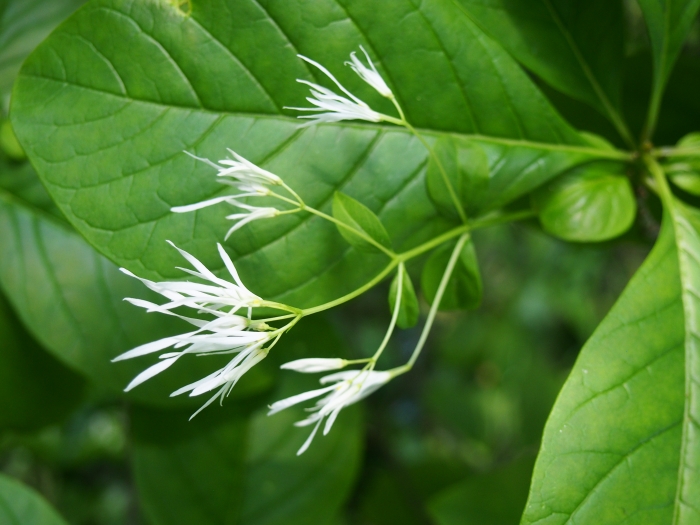White Fringetree
(Chionanthus virginicus)
White Fringetree (Chionanthus virginicus)
/
/

Agnieszka Kwiecień, Nova
CC BY-SA 4.0





















































































Estimated Native Range
Summary
This species is valued for its adaptability to different soil types, including those with alkaline pH, and its relatively low maintenance requirements. It is often used as a specimen plant, in naturalized or woodland gardens, and as an ornamental in residential landscapes. White Fringetree prefers full sun to part shade and requires well-drained soil; it can tolerate high water levels but is also somewhat drought-tolerant once established. It is not known for serious pest or disease problems, but it can be affected by emerald ash borer and scale insects. Gardeners should be aware of these potential issues and monitor for signs of infestation.CC BY-SA 4.0
Plant Description
- Plant Type: Tree, Shrub
- Height: 12-20 feet
- Width: 12-20 feet
- Growth Rate: Slow
- Flower Color: White
- Flowering Season: Spring
- Leaf Retention: Deciduous
Growth Requirements
- Sun: Full Sun, Part Shade
- Water: Medium
- Drainage: Fast, Medium
Common Uses
Bee Garden, Bird Garden, Border Plant, Butterfly Garden, Drought Tolerant, Fire Resistant, Fragrant, Hummingbird Garden, Low Maintenance, Showy Flowers, Street Planting
Natural Habitat
native to a variety of habitats in the Central and Southeastern USA, including moist woodland areas, stream banks, and limestone outcrops
Other Names
Common Names: Fringetree, American Fringetree, Old-Man’s-Beard, Poison-Ash, Virginischer Schneeflockenstrauch, Arbre À Franges, Arbre De Neige, Snöflockbuske
Scientific Names: , Chionanthus virginicus, Chionanthus virginicus var. virginicus, Chionanthus virginicus var. maritimus, Chionanthus latifolius, Chionanthus fragrans, Chionanthus obovatus, Chionanthus virginicus subsp. maritimus, Linociera cotinifolia, Chionanthus cotinifolius
GBIF Accepted Name: Chionanthus virginicus L.